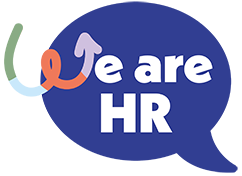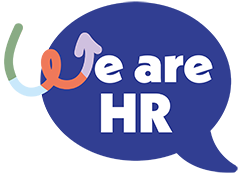Table Of Contents
- 8 Essential Insights for Successful HR Career
- Introduction
- 1. Cultivating an Open Mind: Embracing the Symphony of Human Differences
- 2. Becoming a Tech-Savvy Champion: Leveraging Technology for Transformation
- 3. Mastering the Art of Communication: Commanding Attention with Clarity
- 4. Charting a Course for Success: Setting SMART Goals for HR Initiatives
- 5. Unveiling the Power of Data: Harnessing HR Analytics for Informed Decisions
- 6. Embracing the Spirit of Innovation: Championing Change and Continuous Improvement
- 7. Leading by Example: The Power of Integrity and Empathy in Shaping Culture
- 8. Staying Ahead of the Curve: Continuous Learning in a Dynamic Industry
- Conclusion: The Journey of a Lifelong HR Professional
Introduction
The world of Human Resource Management (HRM) is a vibrant, dynamic field that pulsates with the energy of human potential. Here, HR professionals aren’t just cogs in the machine; they’re architects, shaping the very foundation of organizational culture and driving success through the power of their people.
This comprehensive guide unveils eight cornerstones that will empower you to thrive in today’s ever-evolving workplace:
1. Cultivating an Open Mind: Embracing the Symphony of Human Differences
Imagine HR as a grand orchestra, where each employee brings a unique instrument and melody to the performance. An effective HR professional isn’t a conductor rigidly enforcing a single score, but a maestro who recognizes the value of each instrument and orchestrates a harmonious symphony.
This requires an open mind, free from preconceived notions and stereotypes. Embrace diversity in all its forms—thoughts, backgrounds, and experiences. Seek out diverse perspectives, actively listen to understand, and leverage the collective brilliance of your workforce. By fostering inclusion, you unlock a wellspring of creativity, innovation, and problem-solving prowess that fuels organisational success.
2. Becoming a Tech-Savvy Champion: Leveraging Technology for Transformation
Gone are the days of paper-based personnel files. Today’s HR professional thrives in the digital age, wielding technology as a transformative tool. Sophisticated HRIS (Human Resource Information Systems) streamline tedious tasks like payroll and benefit administration. AI-powered recruitment platforms can scour vast applicant pools, identifying top talent with laser focus.
But technology isn’t just about automation; it’s about unlocking potential. Learning platforms empower continuous employee development, while collaboration tools foster seamless communication across geographical boundaries. The key is to stay abreast of advancements, integrate them strategically, and use them to revolutionize processes, enhance the employee experience, and drive results.
3. Mastering the Art of Communication: Commanding Attention with Clarity
Clear, compelling communication is the cornerstone of effective HR leadership. It’s not just about delivering messages; it’s about commanding attention, inspiring action, and fostering trust. Whether it’s crafting watertight policies, conducting performance reviews, or addressing sensitive employee concerns, clarity is paramount.
Express yourself with precision and conciseness. Avoid jargon and ambiguity. Tailor your communication style to your audience, ensuring everyone comprehends the message. When policies are clear, employees understand expectations, and managers can enforce them fairly. When performance reviews are delivered with clarity, employees gain valuable insights for growth. In essence, clear communication fosters a foundation of trust and transparency that empowers a healthy and productive work environment.
4. Charting a Course for Success: Setting SMART Goals for HR Initiatives
Success in HR, like any endeavour, hinges on setting clear, actionable goals. These goals shouldn’t exist in a vacuum; they should be meticulously aligned with overarching organizational objectives. Are you aiming to reduce employee turnover? Enhance employee engagement? Optimise recruitment strategies. Whatever your focus, define SMART goals: Specific, Measurable, Achievable, Relevant, and Time-bound.
Delineate measurable targets that quantify progress. Craft strategic initiatives that outline the roadmap to those targets. By setting SMART goals, you transform aspirations into actionable plans, enabling you to track progress, measure success, and steer the organisation towards a prosperous future.
5. Unveiling the Power of Data: Harnessing HR Analytics for Informed Decisions
The modern workplace generates a wealth of data—a treasure trove of insights waiting to be unearthed. HR professionals who leverage HR analytics hold a powerful advantage. By delving into this data, you can uncover invaluable trends in employee behaviour, performance patterns, and workforce dynamics.
Predictive analytics can help you anticipate potential issues like skill gaps or high-risk flight risks. Data can inform targeted training programmes, identify areas for talent development, and optimise resource allocation. By embracing data-driven strategies, you shift from reactive decision-making to proactive planning, enabling you to mitigate risks, optimise processes, and drive strategic initiatives with precision.
6. Embracing the Spirit of Innovation: Championing Change and Continuous Improvement
The landscape of HR is a living, breathing entity, constantly evolving and adapting. Those who cling to outdated methods risk being left behind. As an HR professional, you must embrace a culture of innovation, constantly challenging the status quo and exploring alternative approaches to problem-solving.
Be an advocate for change, championing new ideas and methodologies. Is the traditional performance appraisal system no longer serving its purpose? Explore innovative methods like continuous feedback loops or peer-to-peer recognition programs. Are rigid work arrangements hindering employee well-being? Spearhead the implementation of flexible work models that cater to diverse needs. By fostering a spirit of innovation, you propel the organisation forward, ensuring it remains competitive and responsive to the ever-changing needs of the workforce.
7. Leading by Example: The Power of Integrity and Empathy in Shaping Culture
HR professionals are more than just policy enforcers; they are the custodians of organisational culture. Their actions and behaviours set the tone for the entire workplace. To cultivate a positive and thriving work environment, you must lead by example, embodying the very values you champion.
Integrity is paramount. Be transparent in your communication, fair in your decisions, and hold yourself to the same high standards you expect from others. Empathy is equally crucial. Strive to understand the challenges employees face, listen with an open mind, and offer support when needed. When you lead with integrity and empathy, you foster trust, respect, and a sense of belonging, creating a workplace where employees feel valued, motivated, and empowered to reach their full potential.
8. Staying Ahead of the Curve: Continuous Learning in a Dynamic Industry
In the fast-paced world of HR, complacency is a recipe for stagnation. To remain at the forefront of your field, continuous learning is essential. Stay abreast of emerging trends, from the rise of the gig economy to the adoption of artificial intelligence in talent acquisition.
Actively seek out new knowledge through industry publications, online courses, and professional development conferences. Network with peers, share best practices, and learn from their experiences. By embracing lifelong learning, you ensure you possess the most up-to-date knowledge and skills to navigate challenges, seize opportunities, and propel the HR function forward as a strategic business partner within the organisation.
Conclusion: The Journey of a Lifelong HR Professional
The path of an HR professional is not a static destination but a continuous journey of growth and adaptation. By embracing the eight cornerstones outlined in this guide, you’ll be well-equipped to navigate the complexities of the role with confidence, resilience, and a forward-thinking vision.
Remember, HR is not just about managing people; it’s about empowering them. It’s about fostering an environment where individuals can thrive, contribute their unique talents, and collectively drive organisational success. Embrace the challenge, unleash your potential, and make a lasting impact in the dynamic and ever-evolving world of Human Resource Management.


